Lvov 48K (Львов 48K)
|
The beginning of cloning in UkraineThe Lvov 48K (Львов 48K) computer was developed between 1985 and 1986 at the Lvov Polytechnic Institute Experimental Research and Development Office (ОКБ Львовского Политехнического Института). The nowadays still operating office bears the NIKI ELVIT (НИКИ ЭЛВИТ) name now. The computer should not be confused with the Львів ПК-01 machine, which was also developed at this polytechnic around the same time. The main contributor to the design was Jurij Dmitrievich Dobush (Юрий Дмитриевич Добуш), who implemented the ULA using discrete elements. He worked together with Evgenij Evgenevich Natopta (Евгений Евгеньевич Натопта), Oleg Vasilevich Starostenko (Олег Васильевич Старостенко) and Vitaly Lev (Виталий Лев). They obtained a significant amount of information from foreign students who resided in the institution's dormitory. The reason for the development was to create a simple computer with good graphics capabilities and a lot of software, which is reliable, compact, and affordable. They chose the ZX Spectrum over the IBM PC, of which they became familiar in the summer of 1984. At the end of 1984, Natopta consulted with colleagues from Kaunas who were also involved in cloning the ZX Spectrum, they began to develop the Santaka machine. They agreed to exchange informations, and the idea of commercial distribution also came up. In August 1985, Natopta and Dobush examined a borrowed computer for two hours using an oscilloscope. They were interested in the ULA, and the interaction between the ULA and Z80. Based on the results and the original circuit diagrams obtained from East German students, they began the development. The ROM firmware was typed from a West German magazine. The development was conducted not on paper, but on hardware, with live prototypes. The first version was completed by the end of September (October) 1985. Based on this, the first circuit diagrams were created, carefully considering the replication of the original machine. This was likely a 16K machine, as reports only mentioned testing with games that ran on this type of computer. This prototype was presumably taken to Novosibirsk, to the Novosibirsk Electrotechnical Institute, NETI (Новосибирский электротехнический институт, НЭТИ). Presumably from this was the NETI AiT (НЭТИ АиТ) clone born in 1986 - it is clearly visible that 32K RAM was later added to the 16K model. Although the Kaunas clone designers had a working prototype earlier, they could only complete it after getting the Lvov version's circuit diagrams. However, the Lvov developers copied the 'memory card' from the Kaunas clone. This probably means the extended memory of the 48K model. By the end of 1985, that actual version of the machine was taken to Harkov, and this became the basis of the Harkov 48K (Харьков 48K). They used it as a currency for exchange, as they were already considering the development of an 8086 XT - for which they needed parts and money. After the development was complete, by 1986 the contructors were preparing the mass production. At the end of the winter of 1986, the plans were sent to the Poljaron company. At this time, the lower and upper sides of the PCB were swapped, it seems that was a common practice in the territory of the (ex-)Soviet Union, at least it also happened with the NETI AiT, PLM Avtomatika and Zvezda clones. These motherboards produced by the Kulon complex of the Poljaron company bore the inscription 71400HH and were available for purchase in 1987. Starostenko took the documentations to Moscow and St. Petersburg too in 1986. This is for example how the Dubna 48K (Дубна 48К), a Moskva 48K (Москва 48K) és Pentagon 48K (Пентагoн 48K) clones were born. The documentations may have leaked out from both the development office and the manufacturing plant, paving the way for further cloning of the clone. As a result of this, the 'second generation' machines without the 71400HH inscription could appear. These machines are called 'two memory fields clones' in the jargon. This means, that the lower 16K RAM of the original ZX Spectrum 48K is provided by eight 2K RU6 memory chips, and the upper half is also provided by eight 8K RU5 chips, half of which are used by the system. Later, of course, the 128K expansion appeared, its creator was A. Jurbev (A. Юрбев). In addition to memory upgrade, it included the replacing of the ROM with 27256 type and installing the AY chip. The essence of RAM expansion is to replace 8 pieces of 2-kilobyte RU6 chips with 8K RU5 ones. [»]
|
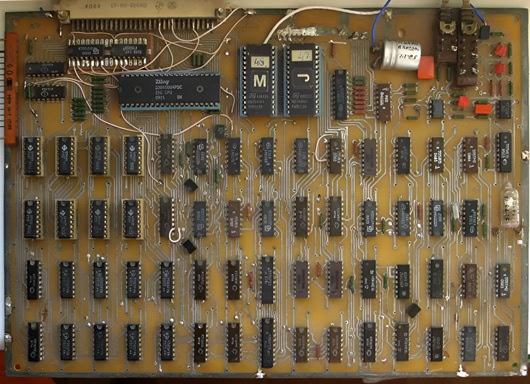 Lvov 48K v1.0
Lvov 48K v1.01986.  Lvov 48K v2.0 7104HHH
Lvov 48K v2.0 7104HHH1987. 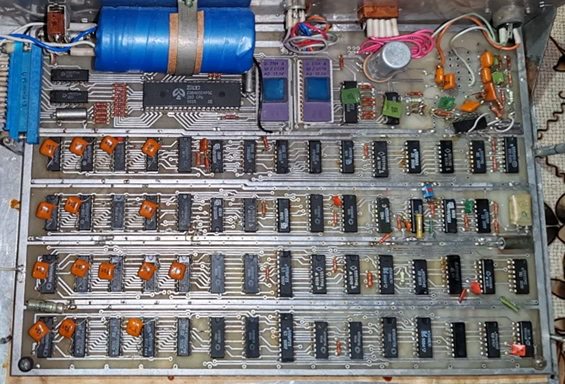 Lvov 48K v2.0
Lvov 48K v2.01987. 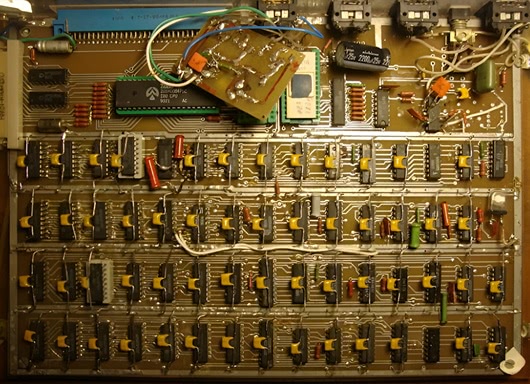 Lvov 128K v2.0 7104HHH
Lvov 128K v2.0 7104HHH19??. |
Santaka 48K (Сантака 48K)

|
|
The progenitorial Lithuanian clone and its commercial versions The Santaka (Сантака) was the first Lithuanian personal computer, developed by the Department of Computers at the Kaunas Antanas Sniečkus Polytechnic Institute (Kauno Antano Snieckaus politechnikos institutas, now KTU) and the Institute of Radio Measurement Technical Scientific Research (Radijo Matavimo Technikos Mokslinio Tyrimo Institutas). In the previous section, while introducing the Lvov 48K clone, the history of the computer was also touched upon. Thus, the idea for the development arose in late 1984 and proceeded in parallel along the Ukrainian clone, with the parties agreeing to mutual information exchange. Development began in 1985, and a year later the clone was born. Among the ZX clones, it is peculiar, that it has 8 pieces of 2K ROM. The explanation for this is, that at that time there was a shortage of larger capacity ones. The photos show, that often even within a single machine it was not possible to obtain identical components from the 573РФ2 or 573РФ5 EPROMs. Another uniqueness is, that the module responsible for image generation was not integrated into the motherboard, but connects via a separate card. This was also retained for the Baltik 48K successor clone. The lowercase Latin characters were replaced with KOI7 Cyrillic uppercase letters. The machine boots with the inscription SANTAKA KAUNAS-MINSKAS 1986. The connectors on the back panel, starting from the reset button, are: the 5-volt power supply, tape in, tape out, system bus, RGB monitor, composite video output, and finally RF out. In addition to a few prototypes, about 200 units were made with metal housings. Due to unreliable parts and high price (700-800 rubles), it was never spreas widely. Small-scale production was planned to begin in 1988, according to the 1988/1 issue of Mokslas ir Technika journal. The article reveals that neither large-scale production nor retail distribution in stores was planned. [»], [»], [»] Additionally, by the end of 1987 (around the same time, when the article went to print), the developers had already finished the Baltik 48K clone, which was superior in every respect for mass production. Therefore, the small number of units produced is no coincidence. The machine was later made by two 'official' factories as well. Of course, they came with a power supply, cables, machine manuals... and, following the ex-Soviet tradition, a factory cassette. The bottom of the machines also features a triple RGB trimmer and the speaker's potentiometer. Whether these were also present on the original Santaka, can only be speculated. The clones were first mass-produced by the Krasnodar Measuring Instruments Factory (Краснодарский завод измеретельных приборов) under the names Impuls and Impulse-M (Импульс and Импульс M). The latter included a built-in joytick adapter and a more advanced Secam/RGB module connected to the motherboard. The joy connector replaced the tape-in connector, and the tape-out connector was replaced by a combined Tape I/O. The machines were booted with the inscriptions 1989 ИМПУЛЬС Краснодар and ИМПУЛЬС-М Краснодар'91. The manufacturing company was privatized in August 1993, and according to the clone's serial numbering, this period leading to bankruptcy ended production. In terms of prices, the Impulse was 995 rubles in 1990, which rose to 1098 the following year. In 1990, the Minsk V. I. Lenin Minsk Instrument-Making Plant (В.И. Ленин Минское производственное объединение) started production under the name Santaka-002 (Сантака-002). In 1992, the plant changed its name to the Belarusian Production Association of Radio Engineering "BELVAR" (Белорусское производственное объединение радиотехники «БЕЛВАР»). The new name also appeared on the documentations provided with the machine. The metal housing of the original Santaka/Impulse pair has been replaced with plastic. The composite and RF connectors were often covered by a perforable blind cover. In 1991, the price was 1500 rubles.
↑date: 2025/04 |
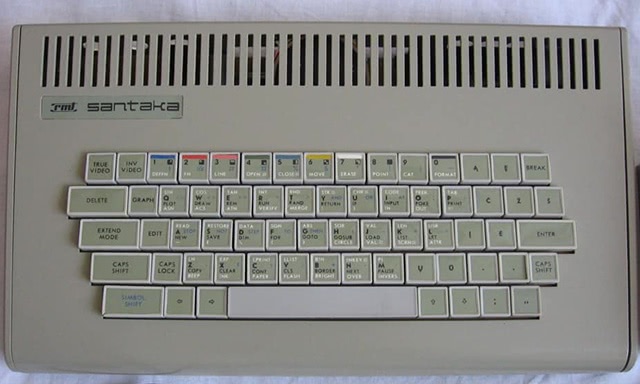
több kép
1986. 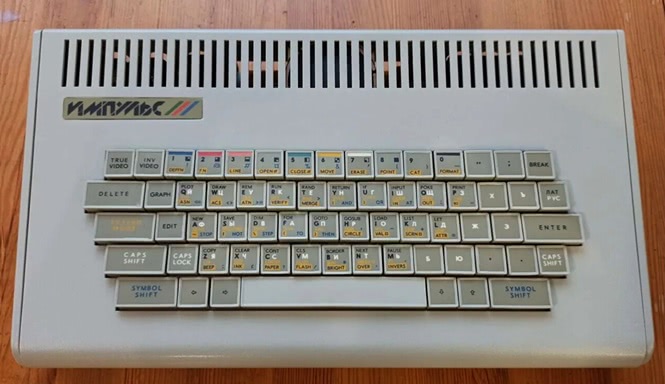
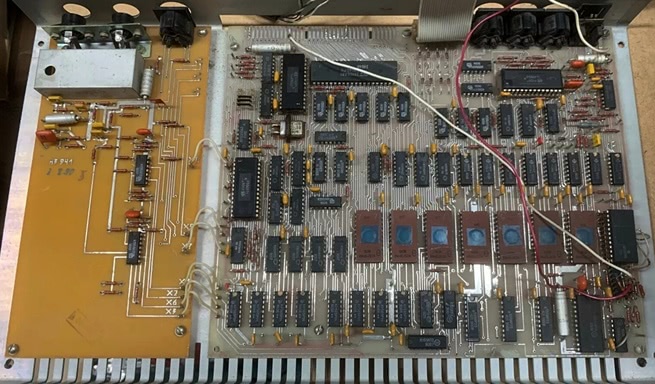
több kép
1990. 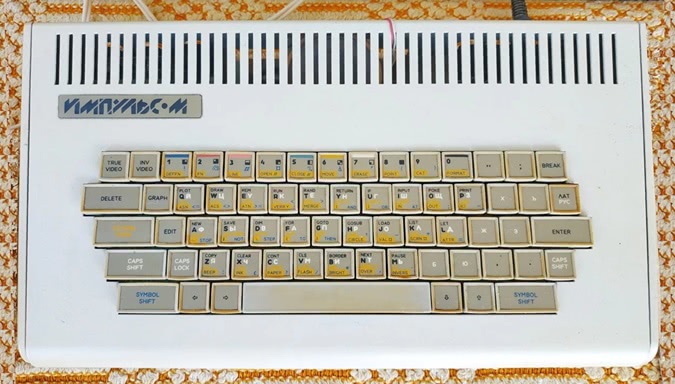
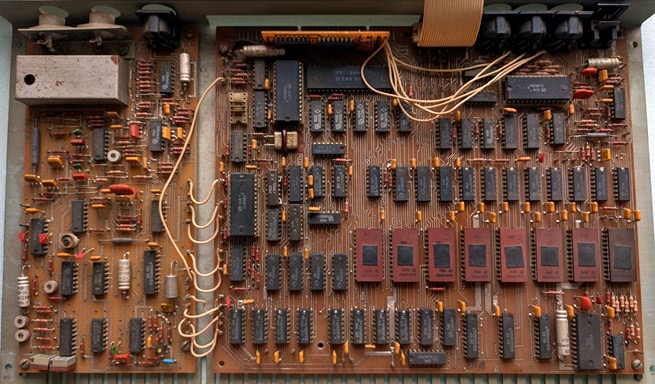
több kép
1992. 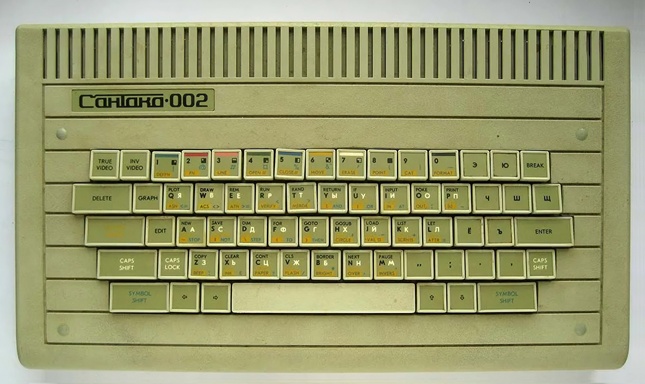
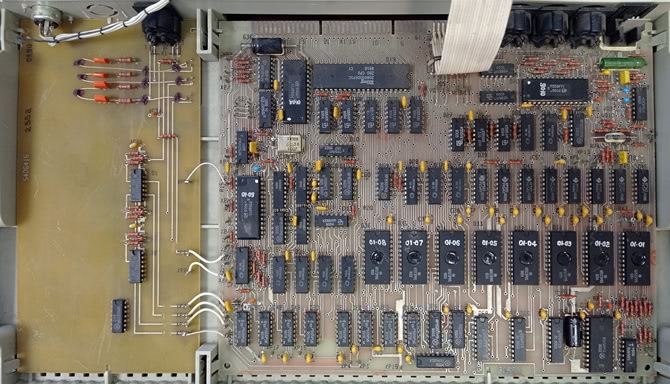
több kép
1990. | |||||||||||||||||||||||||
NETI AiT (НЭТИ АиТ)

|
|
The first clone in Novosibirsk The Neti AiT (НЭТИ АиТ) from 1986 is the clone of the Novosibirsk Electrotechnical Institute (Новосибирского Электротехнического Института) Automation and Telemechanics department, which is based on the Lvov 48K machine. We have already read about the prototype's arriving in Novosibirsk in the previous session. Considered a successful clone, it provided about 70% of the local clones until the appearance of the smaller and cheaper Leningrad. It was produced in multiple versions, retaining the main design of the initial release. The machine boots with custom firmware displaying the text АиТ НЭТИ. Between the Latin and Russian character sets could be switched with the Move and Erase commands. Three versions were released. The first had a motherboard fixable with 38 wires, directly derived from the prototype. The Kempston joystick controller was placed on a stripboard. The second version was the bug-fixed version, no wiring was needed, memory timings were handled by an RC circuit. The RGB output level could be adjusted via a trimmer. In the third version, the top and bottom sides of the PCB were reversed,, an inverter chain was used for memory timings, and the RGB trimmer was removed. The sequence of DIN connectors soldered to the motherboard: power supply, Kempston joystick, black and white TV, RGB monitor, cassette unit. The BPK Sever and Sever-48/002 machines were developed from the clone. Their circuit diagram is the same, primarily the placement of the components differs on the motherboard. Another difference is, that the blocking capacitors of the RAM chips have separate soldering locations on the newer machines, and the motherboard DIN connectors have been replaced by soldered via wires. [»], [»], [»] The successor of the developer department still functions today. The university is now called Novosibirsk State Technical University (Новосиби́рский госуда́рственный техни́ческий университе́т), and the department operates under the name of Automation (Автоматики) department.
↑date: 2024/11 |
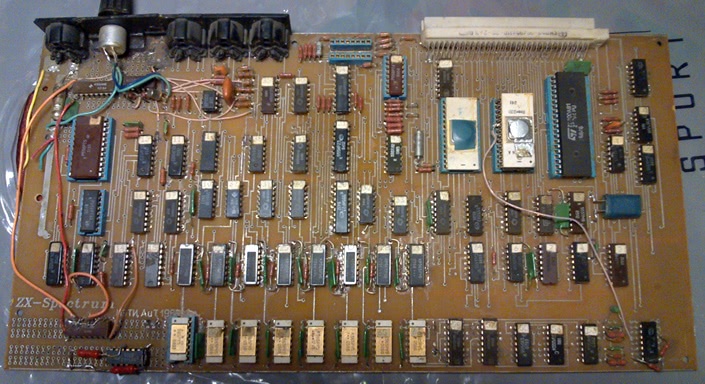
1986. 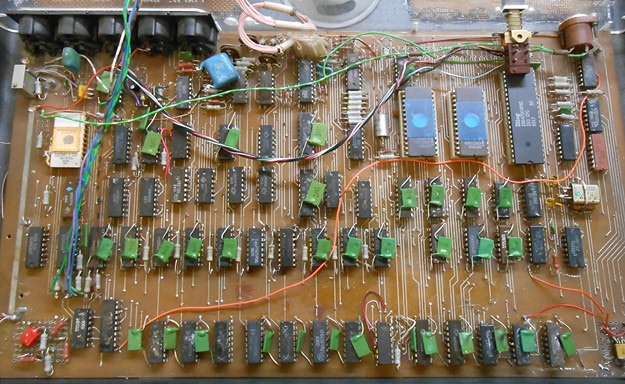
19??. 
19??. |
Harkov 48K (Харьков 48K)

|
|
The Harkov board As already mentioned in the first session, the creators of the Harkov 48K (Харьков 48K) built their machine from one of the unfinished prototype of the The head of development was Nikolai Beljaev (Николай Беляев). Other participants included Miroslav Ivenskij (Мирослав Ивенский), Pavel Grib (Павел Гриб), Artem Terejkovskij (Артем Терейковский), Yura Mendedev (Юра Мендедев), Igor Miloshenko (Игорь Милошенко) and their other friends.
The 30x16 cm motherboard had many bugs and was laborious to set up. The latter is partly due to the large number of microcircuits (68). Once the bugs were corrected, it was a stable clone and quite compatible with the original, Among the 128K extensions, the most well-known comes from Vladimir Mihajlovic Getmanec (Владимир Михайлович Гетманец, VMG, V.M.G., ВМГ, В.М.Г.), who lives in the city, and it dates back to 1990. The schematic, which is almost identical to the Krasnodar 48K, and was released on the same leaflet, not surprisingly resembles the scheme for Lvov 48K: it is based on the replacement of the RU6 memory chips and the ROM.
From from this clone the Ikar-64 (Икар-64) computer was later built.
↑date: 2024/11 |
Leningrad


|
|
The first mass-clone of the Soviet Union The Leningrad was the first clone which was produced in large quantities and made exclusively from Russian components. Its developer was Sergei Yurevich Zonov. Zonov was graduated from the Bonch-Bruevich St. Petersburg State University of Telecommunications in 1982. With a honorary diploma, he was able to stay in Leningrad and found employment at the now-bankrupt Kozitsky electrical plant. The factory developed military and civilian technologies, and Zonov joined the department dealing with televisions. Later he could work mostly from home. He set up a mini-lab in the kitchen of the accommodation provided by the factory. At the same time, he became a visitor and service provider of the illegal Saturday market near the 'Young Technicians' store on Krasnoputilovskaya Street. Using his own homemade device, he tested electronic components intended for sale at the market. In 1986, he became aware of the ZX Spectrum. He assembled an 'original' ZX Spectrum from a schematic obtained at the market (which was a Harkov 48K schema in my oppionion) and reverse-engineered it down to the last component during troubleshooting. Meanwhile, he eliminated the perceived deficiencies by him, and began optimizing it for mass production. According to an interview in the second issue of ZX Format disk magazine, three main versions were created, differing in the number of chips, which consonant with other sources. From recollections, it emerges that Zonov worked on the clone mostly in the summer holidays, which can explain the two to two and a half years development time. The first version was called Leningrad-0 v1.0 and had 47 chips. In the spring of 1987 were the first mentions of the machine, which appeared on the aforementioned illegal market in the autumn of this year. Only a few dozen units were sold from the machine, which contained about 30 bugs. Zonov removed the labels from the chips. This was followed by a second version, the Leningrad-0 v2.0, which had 44 chips. This version was definitely available for purchase by the end of 1987. The clone is also known as Voenmeh-54M-1 (Военмех-54М-1). This is based on a mistaken hypothesis by Black_Cat from St. Petersburg, which appeared in the SibNews #06 disk magazine. [»] According to the article, the machine is a clone of the Vojenmeh Baltic State Technical University (Балтийский государственный технический университет «Военмех»), which is derived clone from Moscow ('M'), which contained 54 chips ('54'), and it is its first revision ('-1'). The currently well-known Leningrad (1) clone, which uses 41 chips, is based on these earlier versions. It was completed by the summer of 1988. Since Zonov did not have enough financial possibility to start the production, he made an offer to companies. He provided the circuit diagram for free in exchange for 20 blank mainboards, on which he would install his own components and then sell them. Delta-N, Rita, Jaguna, Spektr 48, Ural-48K, Vesta IK-30, Elektronika KR-005, Spectrum Sp 23-24, Kontact, K Spectrum, CICH-48, Sunkar - these are just a few of the brand names under which the first machines appeared, partly from Zonov and partly from other companies. The developer received fewer than 100 circuit boards back, so piracy must had been extensive. Individuals with knowledge of electronics also made such clones. Zonov's company, ZS Research, produced circuit boards labeled as ZX Spectrum 1988 and ZX Spectrum 1989. These clones came to be known in colloquial terms as the 'Zonovski variant', meaning Zonov's version. By the time they became popular outside the city, the name "Leningrad" stuck to them. The price was 130 rubles, roughly equivalent to one month's average salary, which contributed to its widespread adoption. There is no precise data on the number of machines produced; estimates range from 10,000 to 100,000 units. The clone variants developed from the original Leningrads naturally increasing this number. The Leningrad belongs to the category of machines with a 'single-field' memory layout, meaning it is built using only a single type of RU5 chip. Out of the installed 64K RAM, the system used 48K. It also differs from the original Spectrum, that it used simplified port handling. Every even port corresponded to the #FE port, and every odd port to the Kempston joystick port. As a result, it was not fully compatible, but in practice, this did not meant a real problem. The handling of the cassette tape unit's signals has also improved. The non-standard video output became apparent later when the omnivorous Soviet TVs were no longer in use. Fortunately, the modifications, that provide solutions are not too complicated. The 'plus' model is the bug-fixed version from the summer of 1989. Zonov made changes to the board based according on user feedbacks. Similarly to the previous model, he allowed this one to be freely copied also in exchange for 20 circuit boards. The machine was also cloned by a company called Composit, and due to the brand name on the circuit board, this designation remained in public consciousness. The second generation, the Leningrad 2, was developed by unknown developers in Kharkiv. Their work quickly surpassed the predecessor in this area. By the summer of 1991, it was already possible to obtain this machine with higher quality circuit board and documentation. [»], [»], The extremely rare clone outside of this area is an enhanced version with an optional edge connector and integrable DIN sockets on the circuit board. The screen routines are fully ZX Spectrum compatible, and the addressing of the Kempston port is standard, the #FE port remained the same. The electronics responsible for cassette unit have also improved. Shadow RAM has also been implemented: the contents of the ROM could be copied into the empty 16K RAM space. In the 212a laboratory of the number one dormytory of Novosibirsk Institute of Electrical Engineering, a very rare version, the Leningrad Neti 212a machine was also developed based on the first generation Leningrad. It is about 98% compatible with the original Leningrad. The compatibility with the original Spectrums also improved due to standardization of the #FE port handling. The electronics responsible for the operation of the tape I/O also improved here. [»] The use of a new edge connector on the machine introduced another standard, the Neti bus, which was adopted by several other clones - naturally within the city's sphere of influence. The Kempston/Tape connectors are located to the left of the expansion slot, and the Power/RGB connectors are located to the right. Both 48K and 128K versions were produced. In the former, the inscription System 212a CC&K can be seen along with the manufacturing date. The 128K version has the inscription 128K-mini 212A CC&K next to the date. The creators themselves also modded the 48K machines to 128K. The earliest version of the 48K variant found dates back to April 1992, while the oldest known date for the 128K big brother is from december of 1993. [»] A Beta-128 controller was also made for the machine with the Neti bus, manufactured by the Himac company. The combined AY-LPrint III interface is the work of Art East Computers. [»] and [»] A bus splitter was also made in the 212a laboratory. Additionally, there are also known unlabeled, lower quality boards, indicating that this clone was also copied.
The first 128K memory expansion of the classic era was published in the 1991/1 issue of ZX-Revju (ZX-Ревю) magazine by the company Pljus (Плюс) from Moscow [»]
↑date: 2024/11 |
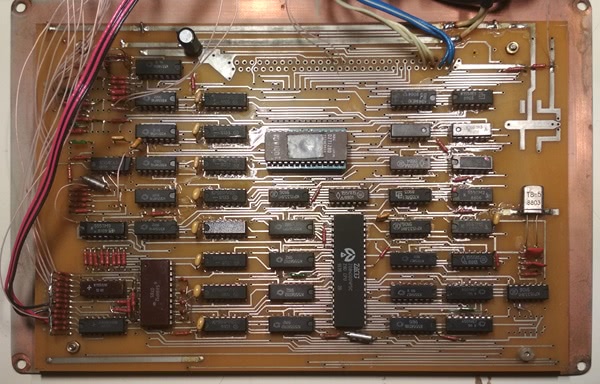
1987. 
több kép
1988. 
több kép
1989. 
több kép
1991. 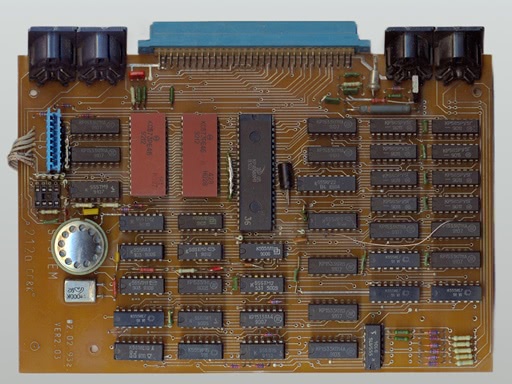
több kép
1992. 
1993. |
Baltik 48K (Балтик 48K)

|
|
The first clone with extras Baltik 48K (Балтик 48K) is the first ZX Spectrum clone, which offers more extra features than the 48K base machine. It was developed between 1985 and 1987 and was ready by the end of 1987, according to the sources. Presumably it is the work of the staff of the Kaunas University of Technology (Kauno technologijos universitetas) or maybe created by radio amateurs. It was primarily intended for industrial use, and later adapted to a Spectrum clone. This is confirmed by its lot of extra features and details, that increased incompatibility. Over the time, both the firmware and the hardware have been continuously developed. It is belongs to the single field memory machines, the total of 64K made up by 8 pieces of 8K RU5 RAM chips, just as with the Leningrads. From this, 16K can be used as Shadow RAM. The processor operates at the non-standart 4MHz speed. The machine is contains less than 50 microcircuits, and the ULA is emulated by К556РТ4 and К155РЕ3 ROM chips. It also has a parallel I/O port driven by the КР580ВВ55 chip. This was mostly used to control the Kempston joystick and printer. The storage of the firmware is provided by two ROM sockets. It has shadow screen, this is multicolor (8x1) compatible along with the standart one. It does not have a video output in the basic configuration, but this could be installed on the stripboard. The machine is commonly associated the most to the Minsk-based Sonet (Cонет) company. In Rostov-On-Don, the Splav Special Design and Technology Institute (ОКТБ СПЛАВ) also made clones. There are also several technical education institutions such as the Novopolotsk Polychnology Institute (Новополоцкий политехнический институт), and the students of Institute of Radio Engineers of Minsk (Минский радиотехнический институт) also dealt with it. In Grodno, in the mid-90s, an individual also made CP/M and TR-DOS based clones. Generally speaking, from both students and radio amateurs were able to buy machines. Almost all components were available in the Minsk radio amateur market. It was sold in this area till 1995-96. It was about 80% dispersed in the eastern part of Belarus. The first version was released in Moscow's agglomeration in early 1988, but it quickly fading into the background due to the Leningrad and Pentagon machines. The main reason for this was price and reliability. For example, the К556РТ4 and К155РЕ3 ROM chips had to be thermal stress tested. Sonet continuesly ran the machines for two days, which was obviously not the case for amateur assemblies, reducing the reliability of the machines. Besides, burning these ROMs also required a special tool. Sonet was manufactured them in the school building of Yanka Maur street, and the distribution took place on Amur street. The first series was made with a built-in power supply, the second batch with external ones. As for configurations, Baltic was the base clone with a cassette unit. The Baltic+ is the disk version, which was used the self-developed Disk monitor system. Baltic ++ is already compatible with CP/M. Baltic +2 got a printer beside these, Baltic +3 in addition a second floppy drive. Baltic +4 is the two floppy drive version without printer. The mainboards were ordered from the local factory. Beside the finished machines, they also distributed empty motherboards, floppy controller cards, computer cases, flashed ROMs, and CP/M floppies. Of course, here the video circuit has been pre-installed, often leaving out the chip responsible for controlling the parallel port. As for firmwares, the first one is the traditional Spectrum's, only here with bold font. The next one boots with the customized © 1988 BALTIC RUSSIAN text. A turbo loading firmware was also appeared. The line of 'simple' firmwares is closed with the Baltic (c) 1992 SONET v1.2 one. There were several ROM-disc versions containing multiple firmwares. Here you can choose from the menu activated when pressing the NMI button. Two main versions of this are known. One is © 1988 BALTIC RUSSIAN & CPM, which contains CP/M bootloader, copier and assembler. The other is the 1992 turbo firmware, which received a disk formatter and a cassette tester instead of the assembler. There were two subversions of this. The CP/M has 64 character/row screen and used 800K discs. Despite these improvements, CP/M machines have not been widespread thanks to the high price. The Radiojubel ( Радиолюитель ) magazine was regularly featured the machine, with promotional articles and advertising. These are primarily of the writings of the company founder V. Boreysho (В. Борейшо), which were published since the first issue of the magazine, 1991/1. Of course, the 128k RAM+AY+TR-DOS expansion was also available later to the clone. This means RU5 chips soldered to the top of the originals. The AY-chip is placed on a separate card. An optional ROM extension was also available. This expansion can be used with both 48K and 128K TR-DOS controllers. [»] Later, the 512K RAM expansion also was released from Micruho-Maklaj in the Lprint #23 diskmag released in October 1997. [»] The clone served as the basis Т34ВГ1, the КА1515ХМ1-216 integrated circuit. When designing the circuit, this clone was taken basis without its extra functions. This is confirmed by the 4MHz processor speed and the 5: 3 screen ratio instead of 4: 3. The solution of latter, together with the Int signal bugfix, can be found in the document of SPLAV. The machine was the basis of several other clones too. The Kompanon (Компаньон) is the 95% analogue of the Baltik, its ROM-disk is also roughly the same. [»] Of course, clones with minor or greater changes have also appeared, for example the Astra (Астра) [»], the Saulys-1 [»], the Nikos (Никос): [»], the Riga variant: [»], Ural (Урал) [»] és a Raduga. (Радугa) [»] And then we didn't even talk about Т34ВГ1-based clones...
↑date: 2024/12 |

1987. |
Moskva 48K (Москва 48K)

|
|
The first clone of the Russian capital The Moskva 48K (Москва 48K) clone is associated to Evgeny Pavlovich Fadeev (Евгений Павлович Фадеев) (his callsign is now RV3BJ, then was UV3BJ). The schematic, which was based on the Lvov 48K clone, was given to him by Tadeusz Radusz at the Joint Institute for Atomic Research in Dubna. This version was buggy. Pavlovich and his colleague were worked simultaneously on two prototypes, on which the necessary modifications were made together on the fly. According to wiring diagrams discovered meantime, there were several versions of the Moskva 48K, which differed in the application of bugfixes.
↑date: 2024/10 |
Krasnodar 48K/128K

|
|
From Moscow to Krasnodar The constructor of Krasnodar 48K, Kijashko Vladimir Anatolevich (Кияшко Владимир Анатольевич) radio amateur (RZ6AT) was on summer vacation in August 1987. At that time, Evgenij Pavlovich Fadeev (Евгений Павлович Фадеев, RV3BJ, then UV3BJ) had already completed the prototype of the Moscow 48K. There was no printed circuit board yet, only a circuit diagram and a working wired device on a breadboard. He took this to Zajcev Juri Nikolaevich (UA6CR) to the city of Krimsk to hold a demonstration for interested radio amateurs. He called his friends, who might be interested in the project. Along with Kijashko (then UA6BIE call sign), Bogdanov Juri Stepanovich (Юрий Степанович Богданов - UA6AP, Timashevsk) was also brought by Kijashko's friend, Juri Pavlovich Bojko (Юрий Павлович Бойко) with car to Krimsk. A fairly large number of interested radio amateurs gathered at the demonstration. The participants were immediately impressed by the machine's excellent capatibilities compared to the Radio 86K. So Kijashko promptly decided to build his own machine. The goal was full compatibility with the demonstrated machine and thus with the original ZX Spectrum. He simplified the video output using a 555ID4 chip (SN74LS155 analog). This left room for the implementation of a parallel port based on the 580BB55 (Intel 8255 clone). The two-layer PCB design was done on Astrolon foil. Three versions were made over three weeks. UA6AP also participated in the assembly and testing. Then the constructor sent the negatives to a radio factory, and by the end of the year, the PCB was ready. Debugging was left for the new year. Later, two other factories were involved in the production of the motherboards. The clone was entered into the 34th Moscow DOSAAF amateur radio exhibition, but unfortunately did not win any awards. However, it was later far surpassed the award-winning works in popularity. Vladimir Mihajlovic Getmanec from Kharkiv (Владимир Михайлович Гетманец, VMG, V.M.G., ВМГ, В.М.Г.) also created the 128K extension for this machine, which is practically identical to the Kharkiv 48K circuit, they were also published on the same sheet in 1990. The main momentum is the replacement of the RU6 memory chips and the ROM - just like in the case of Lvov 48K machine. Although we do not know of an 'official' Krasnodar 128K clone, as no documentation has survived, a clone from the city saw the light in August of 2021. It probably never spread widely due to the rise of the Pentagon 128K +2 ATM. Another reference to the mysterious machine is that the Narcom 128K v1 case bore the inscription Красногорск-128. It is unknown, whether the clone creators at Form Co. Ltd. designed their first machine based on the extension made by VMG, or if the 'planar' type machine mentioned here served as the basis. In any case, the motherboard lacks the 580BB55 chip, the hallmark of Krasnodar, but it is very likely that a daughterboard between the CPU and EPROM simulates its operation. This is supported by the fact that most of the wiring is connected to the expansion bus. [»], [»], [»]
↑date: 2025/03.
|

1988.  Krasnodar 128K
Krasnodar 128K19??. |
LGS-Fregat

|
|
An unfinished Baltik 48K clone The LGS (ЛГС) clone first appeared on the zx-pk.ru forum in February 2015. [»] This was a version with a built-in keyboard. The same version later reappeared on the forum. [»] The production date of the machine is 1990/01 according to the inscriptions. [»] Mihail Tarasov (Mick aka Micklab) found a keyboardless version in the flea market. [»] This included the inscription 29-APR-88 FREGAT and Тул. So the date can be determined precisely, and the abbreviation refers to the city of Tula. The size of the motherboard with keyboard is 22.5х20.7cm, the one without it is 21x14cm. What could this clone have been originally? In all likelihood, a Baltik 48K clone-prototype, on which they tried to integrate the TV/RGB output - as it turned out during Mick's reconstruction unsuccessfully. The suspicion of kinship with the Lithuanian clone is strengthened by the large number of 20-pin ICs, as well as the date of release. The most significant difference between the found two clones is the cassette tape recorder circuit.
↑date: 2024/11 |
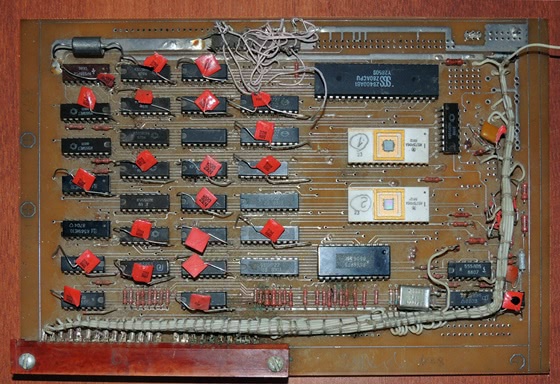
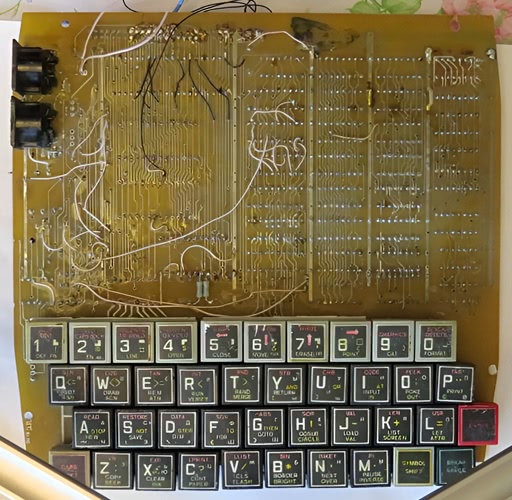
1988/04, 1990/1. |
Moskva 128K (Москва 128K)

|
|
The forerunner of Pentagon 128K The Moskva 128K (Москва-128) was the first 128K Soviet clone. It can be considered the predecessor of the Pentagon 128K 2+ ATM, it is essentially a Pentagon without a Beta-128 controller. It was created by the ATM association. The abbreviation initially stood for the Moscow-based Associaciya Tvorcheskoy Molodezhi (Ассоциация творческой молодёжи), meaning the Association of Creative Youth. Later changed to the Association for Technics and Microelectronics (Ассоциация техники и микроэлектроники) name, keeping the already introduced abbreviation. The relationship between the Moskva 128K and the Pentagon 128K ATM is evidenced not only by the similarity of the specifications and the circuit diagram, but also by the fact that the circuit diagrams were obviously made by the same person. [»] és [»] The machine was released in 1989. The 128K RAM is realized with 2x8 pieces of 565РУ5 (ТММ4164) chips, each having 8 Kbyte capacity. It included a ZX-Lprint III interface and a Centronics port. The image can be obtained through an RGB connector adjustable with trimmers, or on a black/white composite TV output. The 537РУ10 (HM6516-9) or 537РУ8 (TC5516) 2K RAM chips were responsible for the double Sinclair joystick emulation, as well as for the five programmable buttons. Of course, the cassette unit input and output can also be found on the motherboard. The power supply is 5 volts, the system connector has 2.5 millimeters pin spacing. The main firmware is stored in the 32K 573РФ7 or 573РФ8 EPROM (27256 analog). The printer firmware was located in the 2K 573РФ2, which is equivalent to the 27216. It was made in several subversions, the motherboard contained two to four errors. It was difficult to install, among other things, this is why it was not popular. Although - according to the circuit diagram- the creators wanted to make a ZX Spectrum 128K+2 compatible machine, the slightly faster, and thus incompatible, Pentagon standard was born, which later became the de facto standard in the territory of the former Soviet Union.
↑date: 2025/02 |

1989. |
Taganrog 128K/48K (Таганрог 128K/48K)

|
|
Three-tiered Leningrad clone The Taganrog 128K/48K (Таганрог 128K/48K) computers were developed between 1989-91 within the framework of the Taganrog Institute of Radio Engineering (Таганрогского радиотехнического института). Into the development was involved the Department of Antennas and Radio Repeater Devices (кафедре Антенн и радиопередающих) and the MIUS Research and Design Office for Modeling and Control Systems (Научно-конструкторское бюро моделирующих и управляющих систем МИУС). The list of students of the Radio Engineering Faculty who participated in the development: Andrej Vadimovich (Андрей Вадимович), Sergej Magomedovich Alhasov (Сергей Магомедович Алхасов), Viktor Vasilevich Kozhenjakin (Виктор Васильевич Коженякин) and Vitalij Mihajlovich Majsov (Виталий Михайлович Майсов). In the first half of the 90s, it was the most popular clone in the Rostov region. This was due, among other things, to its small size, 128K RAM and Kempston port, as well as the expansion connector, in addition to the affordable price. The 24.9×14.3 cm motherboard is based on the modified scheme of the Leningrad 1. One of the few clones - besides Profi and Elara 128K v1.0 - with a modular design. So for the main motherboard, the manufacturer himself offered (combined) additional boards. The vertically oriented bus was able to achieve a compact sandwich structure, so it could be installed into most computer cases. It could also be installed in a microcomputer case using only the motherboard (and possibly an AY card). Any ZX-standard expansion card can be connected to the system bus. In the spirit of the previously mentioned modular structure, developers offered several own cards, that could be connected sequentially. One of the combo card features a floppy disk drive controller with serial and parallel ports. The other is the EPROM flasher card. There was also a board for handling the extended keyboard and also a schematic for the AY interface. A keyboard and AY combo-card were also introduced. The boards were assembled by hand. 'Of course' there was appared a pirated version with TS7M logo with a slightly modified circuit. The pirates not only copied the machine, but also did not hesitate to use the documentation for their own clone. The machines could also be purchased as kits, for example, from Recly Computer Company. [»] The first DIN connector of the motherboard is for the 5 volt power supply. It's followed by the system bus. The Kempston joystick, tape recorder and RGB are closing the line. The motherboard is relatively freely configurable. In the ZX128/64 configuration, the required 32K ROM size may consist of 1 pieces of 27256 (compatible) EPROM or 2 or 4 27128, 2764 types. Since there are only two sockets, a pigback solution should be used in the latter case. The 64K RAM requires 8 RU5 chips. The 128k config requires 16 RU5 or 8 RU7. ZX48 requires a simple 27256 or double 27128 EPROMs, and eight RU5 for RAM chips. The EPROM burner card is dated to 1990. The burner program is the work of Alhasov Sergei (Алхасов Сергеи, Friendly Software) from MIUS. The hardware is compatible with the 2716, 2732, 2764, 27256, 27512, 573РФ2 and 573РФ5 (analogs of 2716), 573РФ4 and 573РФ6 (2764) EPROM chips . Burning the largest capacity 27512 is done in two steps, and of course is not possible with 48K machines. The disk drive and Centronics-RS-232 interface expansion was released in 1991, according to the documentation. The LPrint III compatible interface is uses the TR-DOS version 5.03. The circuit responsible for handling the expanded keyboard appeared in the same year. This, in addition to the 8x5, also supports 8x6 and 8x7 keyboard matrixes. The functions of the additional keys are stored in the 573РФ2 or 573РФ5 EPROM. The AY interface is compatible with the AY-3-8910/YM2149F type. The (Flash)ROM/RAM disk comes from the Coders' Academy hardware guy Aguzov Igor Viktorovic (Агузов Игорь Викторович, aka RZ Soft). The version number of the found software is 6.19 from 1996. [»] In the May 1997 issue of Public Spirit, the team's first and last only issue of this diskmag, already the version 6.20 is listed. [»] The size of the ROM disk is 512K, the RAM disk is 2048K. An interview with Sergei Magomedovich Alhasov revealed, that they were approached with the idea of a slot machine based on the Taganrog 128/48, hence the start of development. [»] The final product included utilities and game programs. In Rostov-on-Don, the Omega Hackers Group launched the DonNews discmag, which was published with 21 issues from January 1999 to March 2005. In Rostov-on-Don Omega Hackers Group was started the DonNews disc magazine, which was published with 21 issues from January 1999 to March 2005. In issue 12, we can read from Andrej Petrovic Gorelov (Андрей Петрович Горелов, Disabler) about modding Spectrum clones to Pentagon 128K 2+ compatibility. [»] As a local machine, the T-128 naturally received a separate article in this September 2000 issue. [»] In issue 17 (late April 2002), Disabler also published the schematic of the 32/64... 256K cache expansion (for Spectrum, this means shadowRAM) [»] Igor Semenov (Игорь Семёнов, Steve of Coders' Academy) has made the 1024K RAM expansion for the machine, which is compatible with ATM Turbo, Pentagon and Profi standards. You can read about the expansion in [»] Deja Vu 9 (November 1999) and Polese 16 (February 2000). [»] We can also find ideas for implementing a bank LED map in the issue of Inferno diskmag 2, written by Maksim Saskin (Максим Шашкин, Shaitan). [»] The article, published in March 2001, also covers the Scorpion and Spark machines.
↑date: 2025/03 |
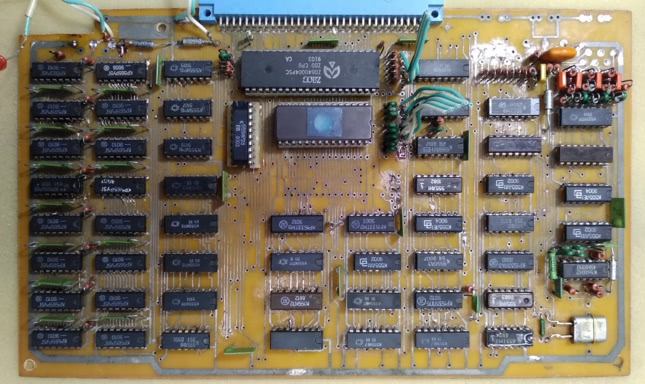
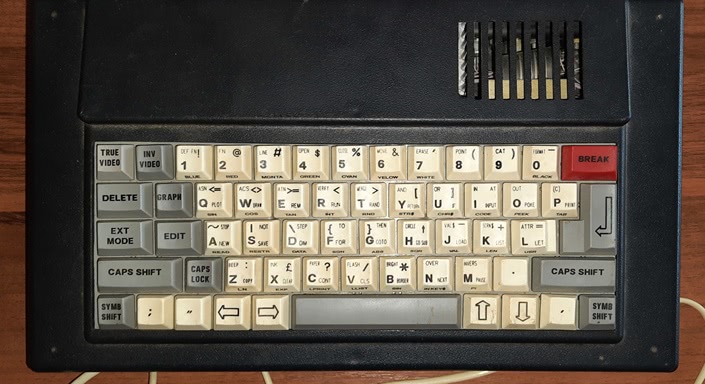

1989. 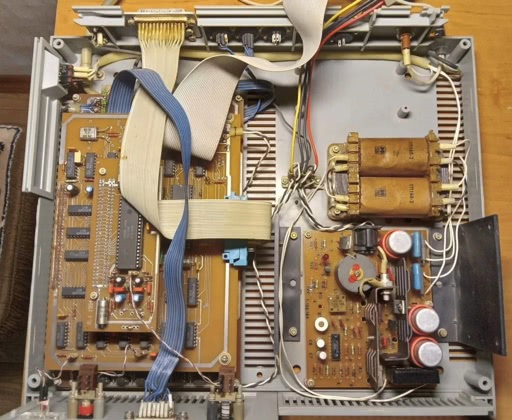
19??. | |||||||||||||
| © Tarjan Richard Gabor 1999-202x.
· address: HU-2500 Esztergom, Basa str. 19., Hungary · e-mail: trichard(a)journalist.com |